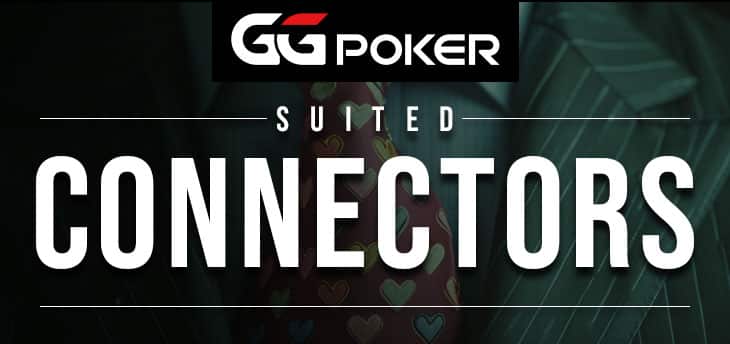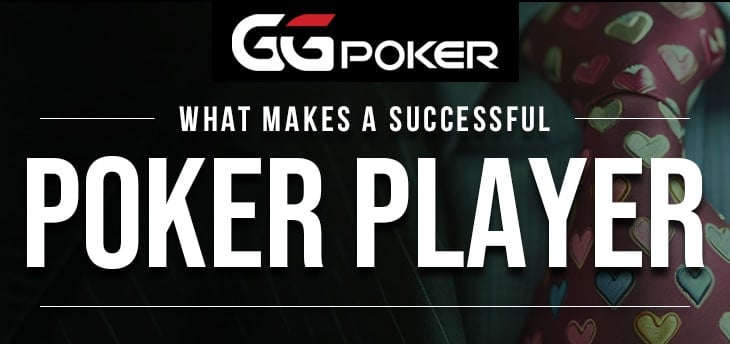Strategies for Playing Suited Connectors

Suited connectors (adjacent cards of the same suit like 6-7 of hearts or 9-10 of spades) can be valuable speculative hands in Texas Hold’em poker when played in the right situations. They can also lead to significant losses if played incorrectly. Understanding when and how to play these poker hands can turn them from potential pitfalls into profitable weapons under favorable conditions.
In poker games ranging from cash tables to poker tournaments, suited connectors offer unique advantages when you understand the basic rules of position and pot odds. These two hole cards can win substantial pots against premium hands when played with discipline and awareness of hand rankings. Whether you’re dealt these hands in Texas Hold’em cash games or tournament poker, your approach should adapt to the specific poker variant and table dynamics.
The Appeal of Suited Connectors
What makes suited connectors so enticing in poker? Their potential for making strong hands: straights, flushes, and the coveted straight flush. Unlike high card hands or pairs, suited connectors can surprise opponents with their hidden strength. When the dealer deals community cards that connect with your hole cards, you can build powerful five card hands that dominate the pot.
These poker hands derive value from their deceptive nature and implied odds potential. While opponents may put you on high cards or one pair, you could be drawing to a straight flush or already holding a winning hand that beats two pair or better. The key to playing them effectively in Texas Hold’em lies in recognizing they win through implied odds rather than raw pre-flop strength. Understanding where these hands sit in poker hand rankings helps you make better decisions round after round.

Early Position: Proceed with Caution
Playing suited connectors from early position in Texas Hold’em poker is risky. You have limited information about other players’ hands when you’re one of the first to act after the big blind and small blind post their bets. Folding suited connectors in early positions is usually better unless the table is particularly passive and multiple players see each round cheaply.
In most modern poker games, early position play with suited connectors should be tight. While deep-stacked situations might seem to justify speculative plays, early position opens you to exploitation from players in later positions. When you’re dealt suited connectors in early position at a Texas Hold’em table, discipline becomes paramount. Saving chips for more favorable spots is often the better long-term strategy.
Middle Position: A Balanced Approach
From middle position, you can open up your range slightly in Texas Hold’em. Here, you have information about some of your opponents based on their actions, which allows for more strategic plays in poker.
Raising: A raise can be a good move, especially if you can thin the field to two or three players. By doing so, you maintain the lead and set yourself up to either take down the pot with a continuation bet, semi-bluff, or hit a disguised monster when the dealer deals the flop. This aggressive poker strategy works best when you can control the betting round and force weaker hands to fold before more community cards are dealt.
Calling: If there’s been a raise before you, calling can be a good option, especially if the raise comes from one player who tends to overplay their hands. This sets you up for a profitable call, provided you have good implied odds to win a larger pot later in the hand. When you’re dealt suited connectors in middle position and face a raise, consider the raiser’s tendencies before committing chips to the pot.

Late Position: Time to Shine
Late position is where suited connectors truly come into their own in Texas Hold’em poker. Here, you have the advantage of acting last, giving you a wealth of information before making your decision. Position near the dealer button is prime real estate for playing speculative poker hands.
Aggressive Play: Raising with suited connectors is often a good play from late position. When you have position on other players, it’s easy to either steal the big blind and small blind or build a pot with well-timed bets. If multiple players have limped in, a sizable raise can pressure them to fold marginal hands. This poker strategy maximizes your fold equity while keeping the pot manageable. When dealt suited connectors on the button in Texas Hold’em, aggression often pays dividends.
Calling to See Flops: Suited connectors can play well in multi-way pots because they can hit well-disguised hands. Calling behind other limpers can be profitable in low-rake poker games where implied odds justify the investment, particularly when post-flop play is weak. You’re getting better pot odds with multiple players, and when you hit a strong draw or made hand, you have numerous opponents to extract value from across multiple betting rounds. However, in high-rake environments common in many low-stakes games, these speculative calls may not be profitable long-term.
Playing Suited Connectors Online
Online poker presents unique challenges and opportunities for playing suited connectors. The pace of online poker games is faster, and players often rely more on mathematical probabilities and less on physical tells. When playing online poker, you’ll need to adjust your poker strategy accordingly. Here’s how to adapt when playing online:
Use HUDs: Where permitted by the poker site, HUDs (Heads-Up Displays) can provide valuable statistics on your opponents, helping you identify when they’re likely to fold to aggression or when they’re prone to overplaying hands. Use this data to help you make your decision to play suited connectors in real money poker games. Note that many major online poker sites have restricted or banned HUD usage, so verify your site’s policies before relying on this software for decision-making.
Multi-Tabling: Suited connectors can be more challenging to manage when playing multiple tables in online poker. Focus on playing them in middle or late positions where you have the greatest edge and can pay close attention to post-flop dynamics across each betting round. When you’re dealt suited connectors at multiple Texas Hold’em tables simultaneously, prioritize the spots with the best position and pot odds.
Adjusting to Opponents: When you play poker online, you’ll encounter a wide range of player types. Against tight players, suited connectors can be valuable for bluffing when you miss. Against loose players who see too many flops, they’re great for value betting when you hit a big hand and can extract maximum chips. Online poker rooms let you play real money games against diverse opponents, making adaptability crucial.
The Importance of Post-Flop Play
The true skill in playing suited connectors lies in your post-flop decisions in Texas Hold’em. After the dealer deals the community cards, your poker hand’s true strength becomes clearer. Here’s what to consider when you’re dealt suited connectors and see the flop:
Flop Texture: Pay close attention to the flop in Texas Hold’em poker. A flop that gives you a strong draw or a made hand can be played aggressively with bets across multiple rounds. However, if the community cards don’t improve your hand, it’s often wise to check and fold to significant pressure. Reading the flop correctly separates winning poker players from those who chase too many pots without proper odds.
Semi-Bluffing: When you have a strong draw (such as an open-ended straight draw or a flush draw), consider a semi-bluff. This involves betting or raising to create fold equity while still having outs to improve if called. Your two cards combined with the community cards give you legitimate winning potential even when behind. Semi-bluffing is a crucial poker strategy that makes suited connectors profitable.
Pot Control: Avoid building massive pots with marginal hands. Keeping the pot small can prevent costly mistakes if you hit a middle pair or a weak draw. Not every suited connector will connect strongly with the flop, and disciplined poker strategy means knowing when to minimize losses. Controlling pot size helps you survive betting rounds when you miss.
Reading Opponents: Use your observations of other players’ tendencies to guide your decisions in Texas Hold’em. If they’re likely to fold to aggression, you can take advantage with well-timed bluffs. Understanding your opponents helps you determine when your poker hand has the best chance to win the pot by the final round.

How Suited Connectors Play in Tournaments
Poker tournaments require a different approach to suited connectors compared to cash games. In poker tournaments, your stack size relative to the blinds becomes critical. During early tournament stages with deep stacks, suited connectors can be played similarly to cash poker games. However, as antes increase and blinds grow, you’ll need to be more selective about when you’re dealt these hands.
In middle and late tournament stages, suited connectors become valuable stealing hands from late position in Texas Hold’em. The fold equity you gain from raising can win you pots without seeing community cards. But be cautious about calling large bets with these speculative hands when your stack is shallow. In poker tournaments, survival often trumps speculation, and you need enough chips to see betting rounds through to the river when you do connect with the board.
Further Strategies
To take your suited connector game to the next level in poker, consider these advanced poker strategies:
Floating: This involves calling a bet on the flop with the intention of bluffing on a later street. It’s a useful technique if you believe your opponent is c-betting (continuation betting) with a wide range of hands in Texas Hold’em. When you float, you’re representing strength and planning to take the pot away on the turn or river if they show weakness in subsequent betting rounds.
Double Barrel: If you’ve semi-bluffed the flop, consider firing another bet on the turn, especially if a scare card hits. This can force opponents to fold marginal hands they might have called with on the flop. In poker, consistent aggression often wins pots even when you don’t have the best hand at that moment. Double barreling increases fold equity significantly.
Reverse Tells: Giving off reverse tells (misleading physical cues) can trick observant opponents into making incorrect decisions in live poker games. Playing online poker, this translates to varying your bet sizing and timing to confuse other players. Mixing up your play style keeps opponents guessing about your poker hand strength across every round.

Understanding Hand Rankings with Suited Connectors
Knowing where suited connectors fit in poker hand rankings helps you make better decisions in Texas Hold’em poker. While these two hole cards start below premium hands like pocket pairs or high card combinations, they can improve to strong five card hands. A straight flush is the second-best hand in poker, beaten only by a royal flush. Even a regular straight or flush often wins pots against one pair, two pair, or three of a kind.
The key is understanding that suited connectors derive their value from potential rather than immediate strength in poker. When dealt these hands, you’re hoping to connect with community cards to form the best hand by the final betting round. This is why position and pot odds matter so much with suited connectors in Texas Hold’em. Understanding hand rankings helps you assess whether your draw is worth pursuing through multiple rounds of betting, and whether your made hand can beat common holdings like two pair or one pair.
Conclusion
Suited connectors in Texas Hold’em poker are more than just pretty hands. They’re profitable tools when used correctly in various poker games. You can enhance your overall strategy and profitability by understanding when and how to play these hands. Whether you’re grinding online poker cash games or competing in poker tournaments, the basic rules remain consistent: position matters, pot odds guide decisions, and post-flop play determines success round after round.
The key lies in position in Texas Hold’em, understanding betting rounds, and adapting to other players at your table. Whether you’re playing live or online poker, mastering suited connectors will add a dynamic element to your poker game, keeping your opponents guessing and your chip stack growing. The ability to win pots with these deceptive hands separates good poker players from great ones. When the dealer deals you suited connectors, you have an opportunity to outplay opponents who focus only on premium holdings.
So next time you look down at suited connectors (those two cards of the same suit), don’t just see adjacent hole cards in Texas Hold’em. See the potential for straights, flushes, and even the elusive straight flush or royal flush. See the opportunity to outplay opponents across multiple betting rounds and extract value from unsuspecting players. And most importantly, see the path to victory in the world of poker, where hand rankings matter less than skilled play.





